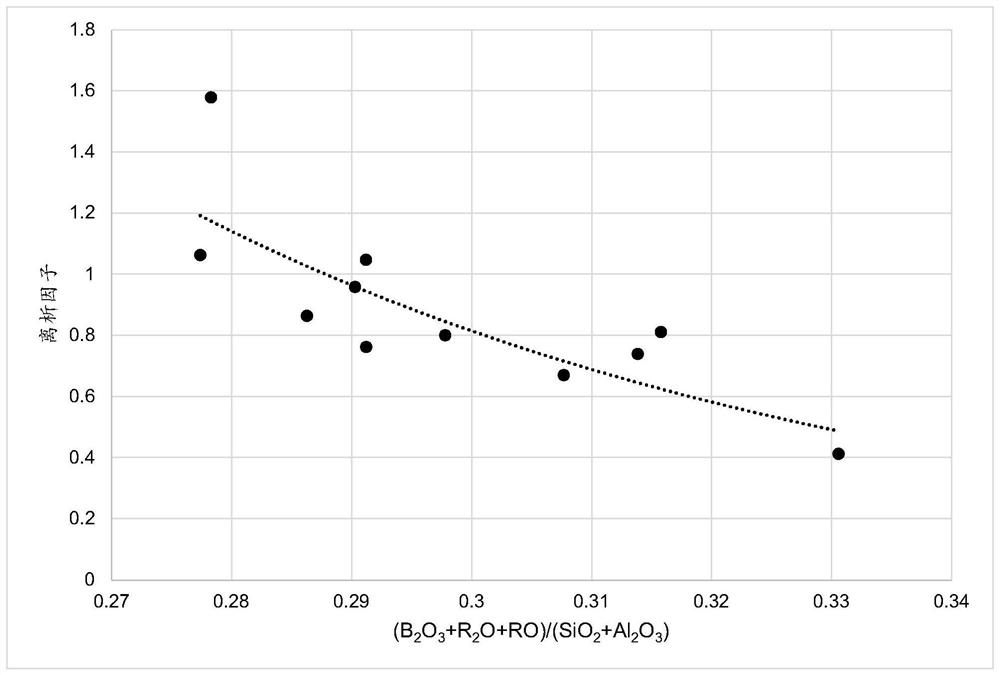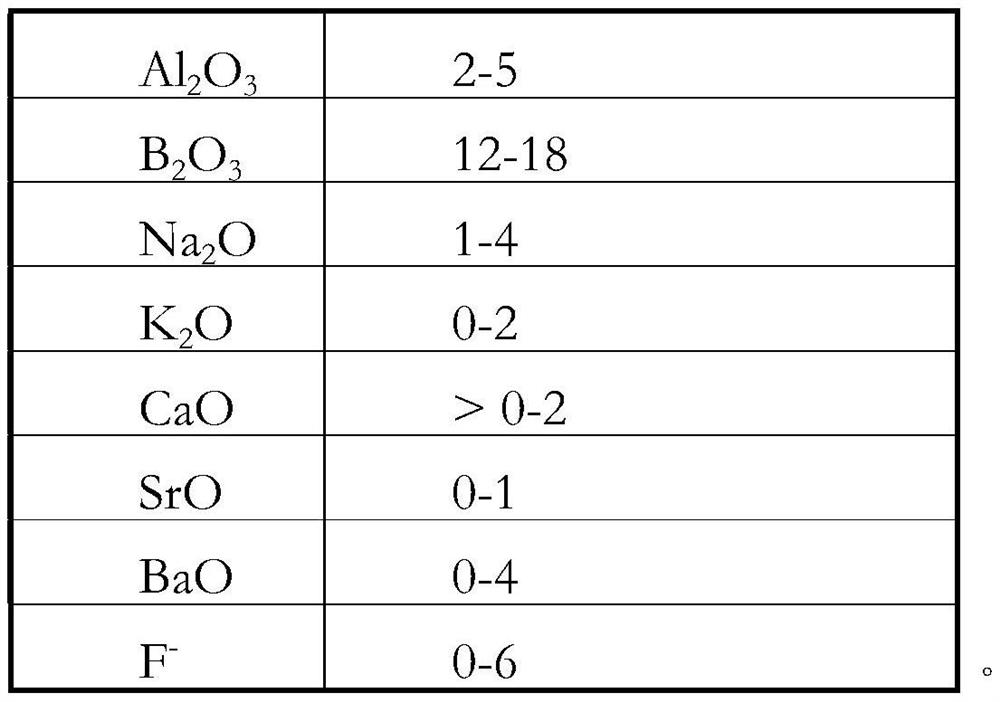Borosilicate glass article
A glass product and glass technology, applied in the field of borosilicate glass products, can solve the problems of high thermal expansion coefficient and no hydrolysis resistance.
- Summary
- Abstract
- Description
- Claims
- Application Information
AI Technical Summary
Problems solved by technology
Method used
Image
Examples
Embodiment Construction
[0115] The present invention relates to glasses that are resistant in several respects. Particularly resistant glass is especially useful when the glass is exposed to special requirements. This is the case in extreme environments, for example. Extreme environments are especially application areas that require special resistance, durability and safety, such as areas that require explosion protection.
[0116] In one embodiment, the present invention relates to glass articles having particular suitability for use in extreme environments and having the following properties:
[0117] - The induced extinction α(λ) at 200 nm does not exceed 0.300 after 48 hours of irradiation with a deuterium lamp,
[0118] - The induced extinction α(λ) at 254 nm does not exceed 0.100 after 48 hours of irradiation with a deuterium lamp,
[0119] - a thickness of at least 0.3 mm, in particular at least 3 mm and / or at most 20 mm, and / or
[0120] - Thermal shrinkage is less than 50μm / 100mm.
[012...
PUM
 Login to View More
Login to View More Abstract
Description
Claims
Application Information
 Login to View More
Login to View More - R&D
- Intellectual Property
- Life Sciences
- Materials
- Tech Scout
- Unparalleled Data Quality
- Higher Quality Content
- 60% Fewer Hallucinations
Browse by: Latest US Patents, China's latest patents, Technical Efficacy Thesaurus, Application Domain, Technology Topic, Popular Technical Reports.
© 2025 PatSnap. All rights reserved.Legal|Privacy policy|Modern Slavery Act Transparency Statement|Sitemap|About US| Contact US: help@patsnap.com



